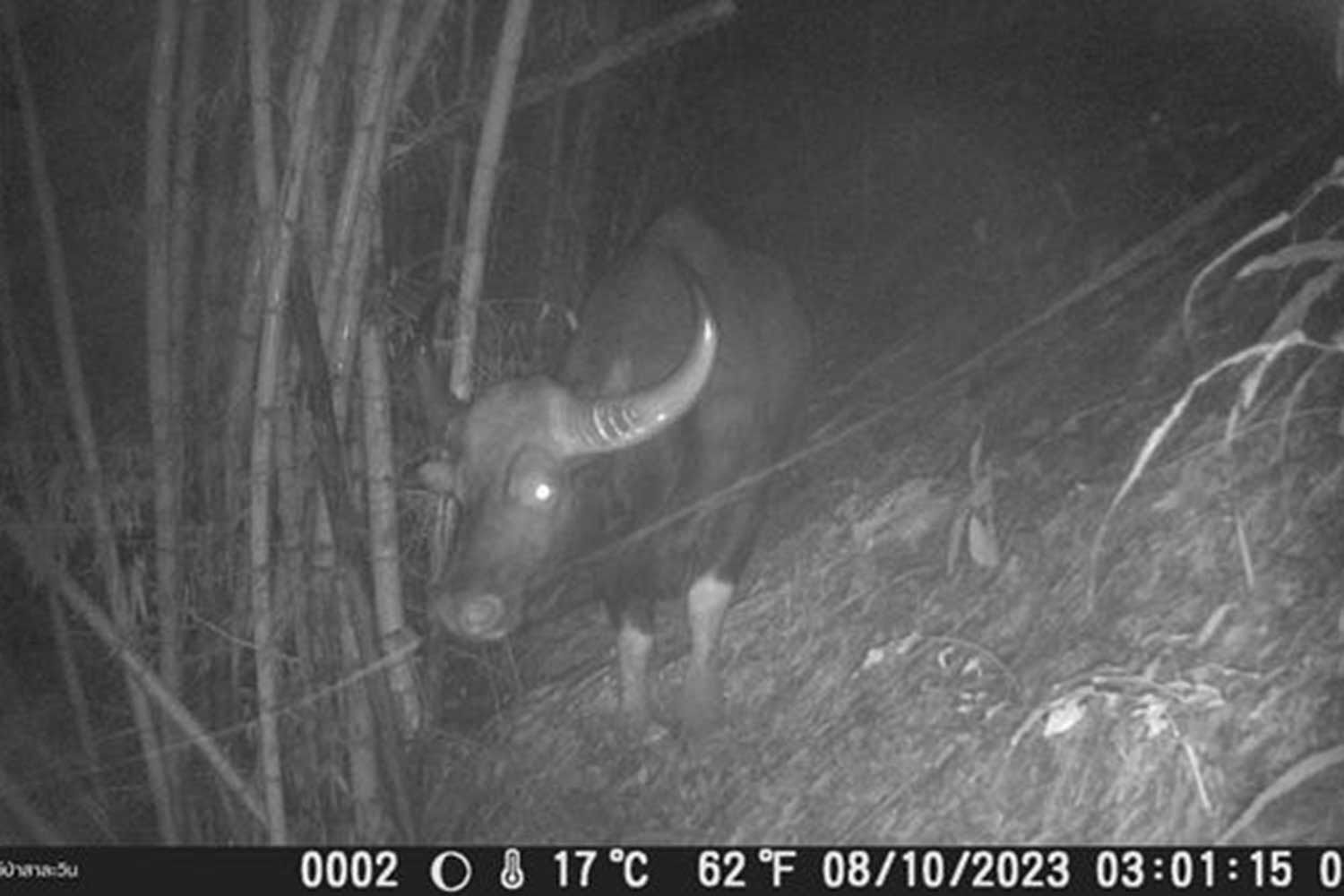Endangered gaur sighted in northern Thailand after 37-year absence

A gaur, an endangered wild animal, has been sighted for the first time in 37 years at the Salwin Wildlife Sanctuary in Mae Hong Son, a northern province on the Thai-Myanmar border. The sanctuary’s chief, Arkhom Boonnontae, confirmed the sighting, noting the rarity of such occurrences in northern Thailand.
The camera trap that captured the elusive bull gaur clicked into action at 3.01am on October 8. This marked the first sighting of a gaur in the Salwin Wildlife Sanctuary since 1986, making the event particularly significant. The gaur, a species seldom seen in the north, is considered endangered by the International Union for Conservation of Nature, reported Bangkok Post.
Arkhom emphasised the importance of this sighting, noting that the gaur is protected under the Wild Animal Conservation and Protection Act.
He also highlighted that the Salwin Wildlife Sanctuary is the sole reserved forest in northern Thailand where a gaur sighting has been reported. This sighting underscores the critical importance of wildlife sanctuaries in preserving endangered species and maintaining the biodiversity of the region.
In April, Thailand captured another rare and exciting animal on camera less than a week after a similar incident was reported.
Wildlife officials in South Thailand’s Nakhon Si Thammarat province have captured photos of a rare bird, the great argus. The officials at Kathun Wildlife Sanctuary captured the images with camera traps, according to the Department of Parks, Wildlife, and Plant Conservation.
Photos from a Facebook post by the department show the bird proudly spreading its wings and showing off its uniquely patterned feathers.
The great argus is a species of pheasant from Southeast Asia and is listed as vulnerable on the IUCN Red List of Threatened Species. The birds are known for their distinctive brown-plumaged bodies, blue heads and necks, rufous red upper breasts, black hair-like feathers on their crowns and napes, and red legs. The species is threatened by habitat loss and hunting for its feathers and meat. To read more click HERE
Latest Thailand News
Follow The Thaiger on Google News:


























